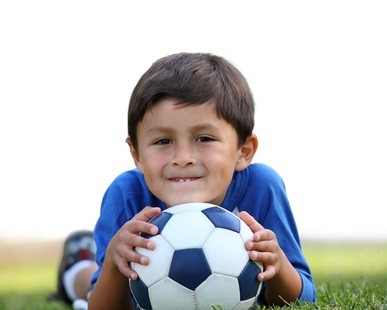 The ACL injury is difficult to manage in children, adolescents and the skeletally immature. An excellent review article was published in the Journal of the American Academy of Orthopaedic Surgeons, in February, 2013. Drs. Frank and Gambacorta were the authors.
The ACL injury is difficult to manage in children, adolescents and the skeletally immature. An excellent review article was published in the Journal of the American Academy of Orthopaedic Surgeons, in February, 2013. Drs. Frank and Gambacorta were the authors.
Listed below are key facts regarding the incidence, diagnosis and treatment of the ACL injury in the pediatric athlete.
– In the past 20 years sports injuries in the pediatric and adolescent population has significantly increased.
– Approximately 38 million young athletes compete per year in the US.
– 2 million yount athletes a year are injured to the point that they require medical attention. A large percentage of those injured are under age 14.
– Increased injuries are thought to come from increased emphasis on year round sport competition , single sport focus and more intense training.
– The incidence pediatric / adolescent mid substance ACL tears has significantly increased as the amount of sports participation has increased.
– The highest rate of the ACL injury in high school athletes is first in female soccer players and second in male football players.
– Management of the ACL injury in the skeletally immature athlete is challenging because of their open growth plates in both the tibia and the femur. A standard ACL reconstruction would pass right through the growth plate and could potentially cause damage to the growth plate. It damage occurs it could cause premature closure or partial closure of the growth plate. If that occurs the leg could grow crooked or become malaligned or shortened.
– Presenting signs and symptoms of ACL injury in children are similar to the adult ACL injury. Swelling typically occurs within 12 hours of the ACL injury, there is usually a pop heard or felt at the time of the ACL injury, and the athlete is unable to finishing playing the game.
– 70% of the injuries occur as non contact injuries.
– MRI imaging has a 95% sensitivity for detecting ACL tears in the pediatric patient.
– The doctor must determine the pediatric patient’s skeletally maturity. This is key to decide what type of ACL surgical reconstruction can be performed. The there are several different ways this can be determined. The use of the Tanner Stages of Maturity which unitizes the athletes physiologic maturity. The other common way to determine skeletally maturity is the use the Greulich and Pyle atlas. This requires that an x-ray of the hand of the patient is obtained and then compared to other x-rays in the atlas to determine bone age.
– Historicall,y non surgical treatment options for skeletally immature patients has consisted of activity modification, functional bracing and physical therapy. Unfortunately this does not work well in most athletes. There is a high noncompliance rate in this group of patients. Kids tend to want to return to sports even if they are told not to return. They end up sustaining additional injuries secondary to their unstable knee that is irreparable: meniscal tears and articular cartilage damage.
– The group that ACL surgery is not recommended for includes patients that meet the following criteria: only a partial ACL tear, high degree of compliance to medical advice, and no additional intra-articular pathology such as meniscal tears.
– Surgery is recommended for all complete ACL tears or partial ACL tears in high activity patients with other intra-articular pathology .
– Surgical technique for ACL repair and ACL reconstruction will be based on the age of the pediatric athlete. The younger the patient with an ACL tear, the less invasive the procedure needs to be to the growth plate. The ACL surgical procedures are divided up into physeal sparing with extra articular and intra articular construction, transphysesl reconstruction with small graft and metaphysical fixation or an adult type reconstruction with autograft.
– Post operative rehab will be based on the type of construction that is performed.

Leave a Reply
You must be logged in to post a comment.